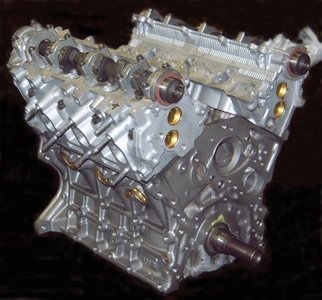Online
Pašreiz BMWPower skatās 113 viesi un 6 reģistrēti lietotāji.
|
Tēma: Jautājums par motoriem
| Autors | Ziņojums |
|---|
| xedos6 | |  Kopš: 12. Apr 2011
Ziņojumi: 0
Braucu ar: Xedos 9 2.5 V6
| Kāds varētu man izkaidrot ar ko atšķiras V6 motors no VR6 ,un kurš būtu labāks šini gadijumā.  |  Offline Offline | | |
Dzvile    
| |  Kopš: 19. Dec 2005
Ziņojumi: 5863
Braucu ar: Čupu ar lūžņiem un diviem BMW.
| The name VR6 comes from a combination of V engine (German: V-motor), and the German word "Reihenmotor" (meaning "row engine" or straight engine) - and so is described as a "Vee-Row" engine.
This engine configuration can also be described as a "staggered six", in keeping with the geometry of the Lancia Fulvia staggered-four, developed in the late 1950s (a continuation of Lancia's design practice dating back to the 1920s). Staggered engines are an amenable further development, with both uneven cylinder numbers, and with staggered-bank Vee configurations.
The VR6 was specifically designed for transverse engine installations in front-wheel drive vehicles. By using the narrow angle of 15° between the two 'rows' in the VR6 engine, it was possible to install a six-cylinder engine within the existing Volkswagen Group four-cylinder-model engine bays. A wider V6 engine of conventional Vee design would have required lengthening existing vehicles to provide enough crumple zone between the front of the vehicle and the engine, and between the engine and the passenger cell. The VR6 is able to use the firing order of a straight-six engine (aka inline-six) engine and, as a result, it is nearly as smooth as an inline-six.[citation needed]
The narrow angle between cylinders allows the use of just one 'cylinder bank', and one cylinder head - whereas conventional Vee engines have two cylinder banks and require two separate cylinder heads. As a result of using just one cylinder head, it also allows just two overhead camshafts to drive all of the valves. This simplifies engine construction, and reduces costs. In early 12 valve VR6 engines, there are two overhead camshafts with six cam lobes on each. The forward camshaft has three intake valve lobes and three exhaust valve lobes to control the frontmost three cylinders. The rear camshaft is designed the same way, but controls the rearmost three cylinders instead. The operating principle of this design is most similar to a single overhead camshaft (SOHC) design. Later 24 valve VR6 engines still had two overhead camshafts, but now with 12 cam lobes each. However, the operation of the camshafts in the 24 valve engine is different to that of the earlier 12 valve engine, in that the front camshaft only operates the intake valves, and the rear camshaft only operates the exhaust valves. The operating principle of this design is most similar to a double overhead camshaft (DOHC) design.
There are several different variants of the VR6 engine. The original VR6 engine displaced 2.8 litres and featured a 12 valve design (two valves per cylinder). These engines produced a DIN-rated motive power output of 128 kilowatts (174 PS; 172 bhp), and 240 newton metres (177 ft·lbf) of torque.
-----------------
"The quieter you become the more you can hear." |  Offline Offline | | |
| Lauriko | |  Kopš: 25. Nov 2007
No: Rīga
Ziņojumi: 4118
Braucu ar: Visādiem VW
|
Un V6
[ Šo ziņu laboja Lauriko, 12 Apr 2011, 22:04:07 ] |  Offline Offline | | |
|
Moderatori: 968-jk, AV, AiwaShuraLLP, BigArchi, Czars, GirtzB, Lafter, PERFS, RVR, SteelRat, VLD, linda, mrc, noisex, smudo
|


 Offline
Offline


